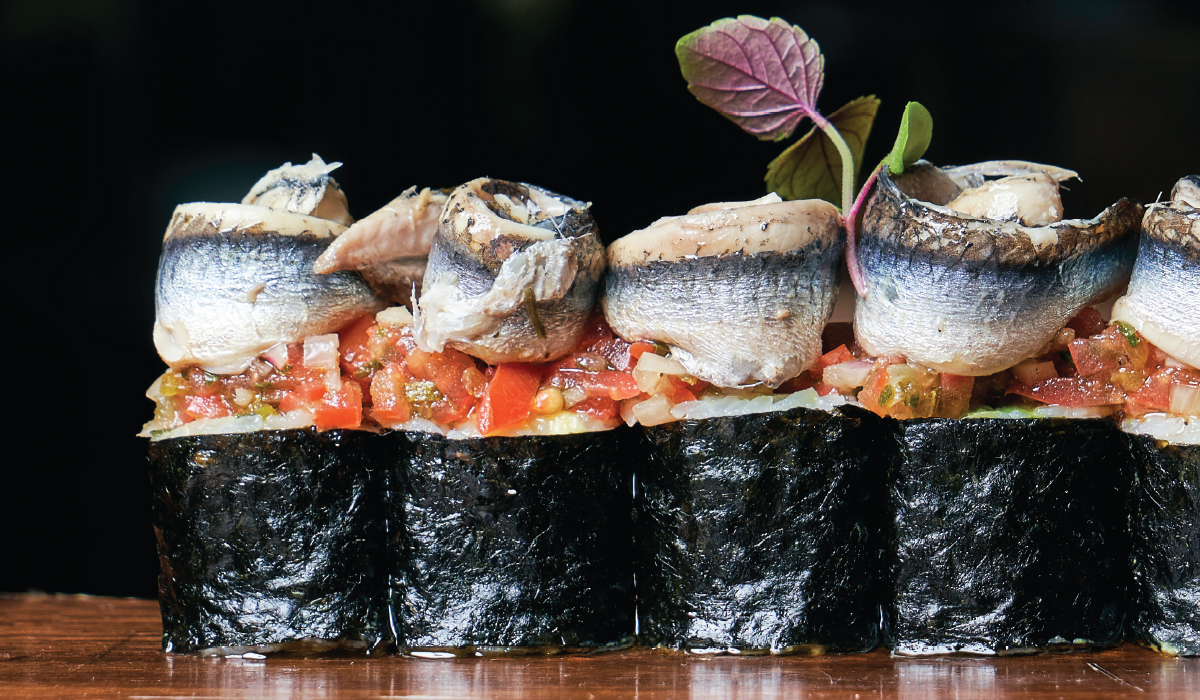In a 1991 episode of The Simpsons, Lisa convinces the family to try a new sushi bar restaurant—which was clearly a novelty not only for Homer, but for the entire audience, since Lisa had to explain the concept of sushi. Since then, the Japanese dish has become one of the most popular food categories in the U.S., inching closer to “mainstream” status and appealing to the health-conscious eater as well as the adventurous, globally minded consumer.
While the vast majority of U.S. sushi restaurants have typically been single-unit independents, America’s growing palate for high-quality fish and novel, international foods has spurred emerging concepts to try its hand at crafting the platters of rolled rice with various fillings and toppings.
According to IBIS World, the number of sushi restaurants in the U.S. has grown by 4.8 percent in 2023 to more than 19,600 businesses, yet there are no companies with more than 5 percent market share—leaving a large opportunity open for growing concepts.
Austin, Texas-based Hai Hospitality—parent of Uchi, Uchiko, Uchibā, and Loro—aims to create items that are both approachable yet unique, such as its signature ham and eggs roll with a crispy pork belly filling. The dish features classic flavors like pork, beer, and mustard, yet plays into breakfast with an egg yolk emulsion.
“We have embraced a more global vision in our sushi bars. We lean into everything from Southeast Asian flavors and technique to classic French,” says Jack Yoss, vice president of culinary at Hai Hospitality.
Hai’s culinary team skews younger, which helps drive the menu innovation process towards newer trends, like embracing gluten-free, vegan/vegetarian options without sacrificing their ethos, Yoss says. In fact, two of his favorite nigiri pieces are vegetarian—the avocado and kinoko (mushroom nigiri).
“Ten or 15 years ago, no one used fish sauce outside of authentic SE Asian restaurants, and we were making a fish caramel and using fish sauce to season meats and vegetables. Now, fish sauce has become so popular, you see it everywhere,” Yoss says about shifting sushi trends. “It’s the same thing with kimchi. It is much more popular now than it was a decade ago.”
But the hottest trend on the rise in 2023 is the omakase room. “Omakase” translates to “respectfully leaving another to decide what is best” in Japanese, and is a traditional, chef-crafted, multi-sushi course dining style.
Omakase sushi menus typically include introductory dishes such as sashimi or simmered dishes, then move on to nigiri sushi. Nigiri sushi, or a small rice ball topped with a slice of fish, is commonly served in traditional Japanese and fine sushi dining, as opposed to the more popular sushi roll in the U.S. However, nigiri sushi will likely become more mainstream in the U.S. market and appear with a lower price point in different types of restaurants and on to-go menus, predicts Taka Tanaka, CEO of commercial sushi robot provider, Autec.
“A rise in sushi consumption, even in landlocked states, has influenced chefs to be more creative with culinary styles and environmental conscientiousness,” Tanaka says. He predicts modern consumers’ attention to sustainable practices will lead restaurants to be more intentional about sourcing sustainable seafood.
When trying to grow sushi concepts across U.S. markets, embracing a more inviting and basic take for guests less familiar with the cuisine can lead to greater (and faster) adoption. For example, when Japanese-founded Kura Sushi was entering its first market outside of California, the team made a deliberate effort to build out a side menu with noodle bowls, rice dishes, and fried chicken to appeal to more customers, says Haijime “Jimmy” Uba, CEO and president.
“Looking at our overall menu, practically everything that we serve has been tailored to the American palate, and the only menu items we have in common with our parent would be basic nigiri sushi,” Uba says. “At the same time, we maintain our authenticity by using the same ingredients and cooking methods as we use in Japan.”
This strategy was successful and laid the brand’s foundation for expanding into markets like Texas and Georgia. Now, Kura Sushi has more than 500 locations across the U.S., Japan, and Taiwan, and grew its U.S. footprint by 28 percent in fiscal year 2021.
The restaurant provides a technology-forward experience complete with conveyor belts, prize dispensers, and sushi servers, Uba says.
“Our technology has allowed us to fully automate work traditionally performed by executive chefs. We reinvest these labor savings back into our food, and we only use ingredients that are free from artificial colorings, sweeteners, preservatives, and seasonings,” Uba says. “Not only does our technology create a truly unique dining experience, but it allows us to serve higher quality food than your typical mom-and-pop sushi restaurant, and at more affordable prices, as well.”
Meanwhile, Rock N Roll Sushi’s approach involves playing Metallica, AC/DC, and Van Halen in restaurants to make construction workers and people with kids feel welcome, says Chris Kramolis, who joined the company as a franchisee before being named CEO in October 2020.
The brand also puts an Americanized twist on sushi by frying and baking rolls as an entry point for the sushi-shy or sushi-curious—with names like the VIP Roll, Punk Rock Roll, and the British Invasion Roll—while also offering traditional sashimi and nigiri sushi.
Since opening in Mobile, Alabama, in 2010 and franchising since 2015, the concept has grown to more than 60 locations. Rock N Roll Sushi plans to be “aggressive” in its expansion and is set to “destroy in the Midwest,” Kramolis adds, as they’re looking at opening new locations in Michigan and Ohio.
“[Rock N Roll Sushi] has made sushi approachable and brought this food to regular Americans that possibly have been interested, but really weren’t invited to the game, because sushi was typically at a higher price in a higher-end place,” Kramolis adds.










